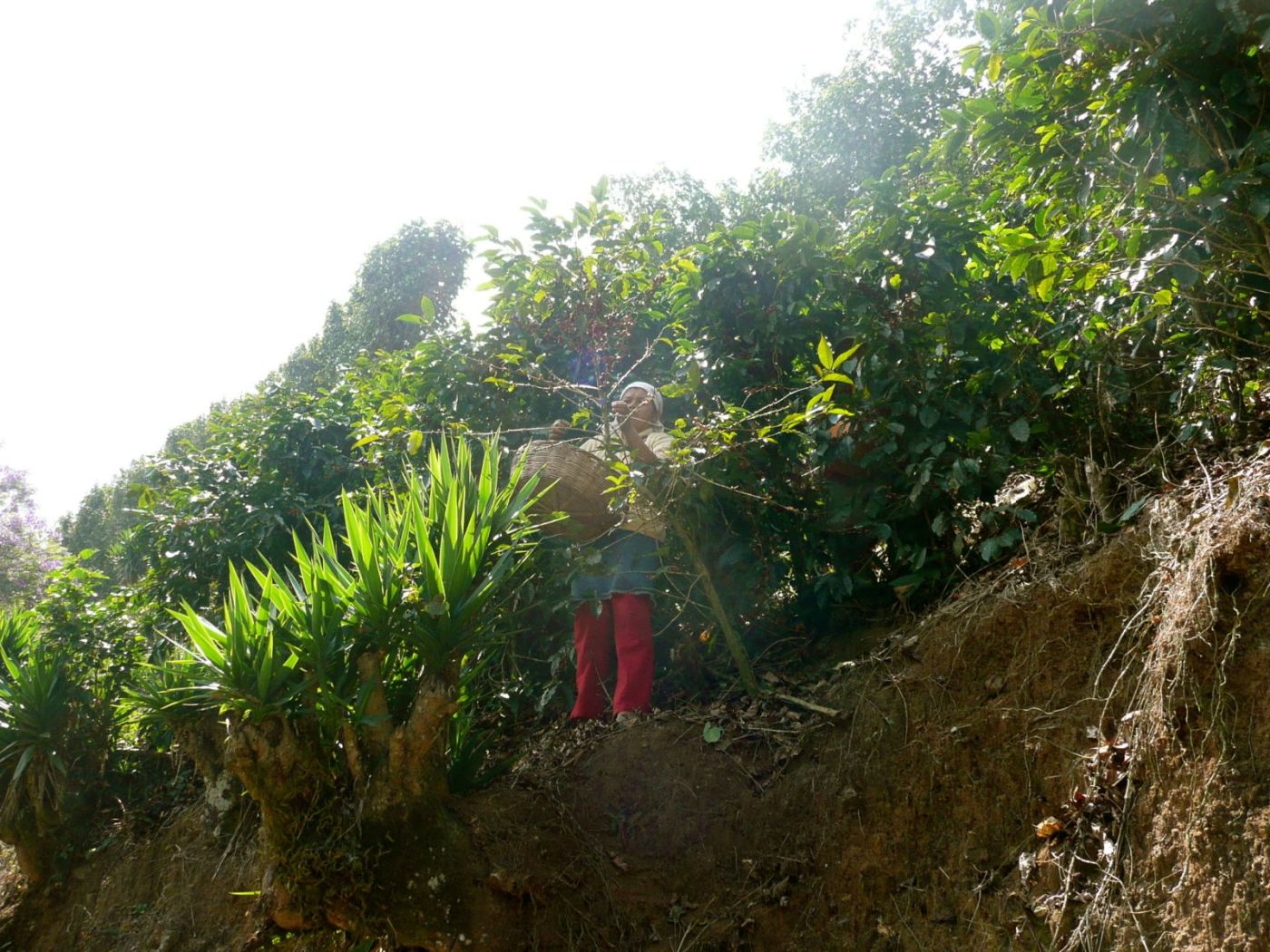Microlot, single origin, small farm, estate — a coffee’s origin and traceability has taken on new value in recent years but understanding the difference and what, if anything it means for your cup, can be tricky. Thankfully, we are up for a challenge! In this blog, moving from macro to micro, we decode these frequently-used, seldom-described coffee descriptives.
Single origin coffee
Single origin indicates that the beans originate from and reflect the characteristics of a single region within a country. The beans that create a single origin coffee may all be from a single crop, farm, and / or grower or from multiple crops, farms, and / or growers. Generally, beans marketed together are grown under similar conditions and have near-identical profile characteristics, such as size, shape, and taste. Single origin coffees can be grown by any type of producer (e.g., commercial, estate, cooperative, or small farm) and may be of any quality level. An example of a single origin coffee is Colombian Campesina.
Co-operative and Estate coffee
Cooperative (co-op) or estate indicates that the beans are processed at the same coffee processing facility and that the process is managed by a single overseer. Estates are often owned by a single farmer whereas co-ops often involve multiple farmers; both are comprised of multiple lots. (Coffee farms and growing areas are generally broken up into lots based on location and topography — similar to agricultural plots or adjoining pastures.) These lots may be located in the same area or they may be dispersed over non-contiguous areas. Most often, co-operatives and estates own a fixed piece of unified land located within a single region within a country. The growing conditions, size, shape, and profile of beans sold together are near identical. That said, a single estate or co-op will likely sell numerous coffees crossing numerous profiles and quality grades. Co-operatives and estates grow and sell single origin beans.
Co-operatives are comprised of multiple independent farming allotments or one large allotment with independent workers who pool resources. Often beans from different growers / allotments are pooled for sale. An example of a co-operative coffee is Mexican Guerrero.
Estates are single farms of any size and generally grow higher-quality coffees. Estates generally have their own processing facilities and process their coffee on-site, meaning they control all processes from seeding to shipment preparation. An example of an estate coffee is Panama Princesa Janca.
Small farm
Small farm indicates that the beans originate from a single farm, most often owned by one family but occasionally owned by a small community of people. Small farms may be part of a selling co-operative or may operate independently. Generally, small farms grow their coffee naturally and do not have their own processing facilities. Small farms generally sell single origin coffee. An example of a small farm coffee is Salvador Millenium.
Microlot
Microlots can be grown by any type of producer — from commercial producers to small farm farmers, and indicate that the beans are unique in character and of exceptional quality, earning a cupping score of 85+. Microlots can be either a) a small lot that produces beans of significantly higher quality than neighboring lots or b) the “best of” beans from numerous lots on a farm, estate, or co-op, etc. All beans in a microlot are grown at high altitudes, in nutrient-rich soil, and share the same size, shape, and profile. Microlots, as their name implies, produce very limited qualities of green beans, often less than 100 bags. Near identical beans on a vast farm that produces thousands of bags for export are labeled high quality or specialty coffee. All microlots are single origin coffees. An example of a microlot coffee is Nicaraguan Matagalpa.
Any type of producer can produce a stunning cup of coffee. The value in knowing what type of farm a coffee grew on is traceability and inference. If you see a “small farm” label, odds are that the coffee is grown naturally by just a handful of people. “Estate” indicates exceptional growing conditions and meticulous care given to processing. “Co-op” implies that there is a community supporting and supported by the beans. “Single origin” allows you to pinpoint the coffee’s regional origin but is not an indicator of quality, and “mircrolot” signals the coffee is exceptional and unique for the region / grower. If you are interested in learning more about coffee descriptives, visit our Knowledge Center or check out the blogs below:
Coffee processing: dry, wet, washed, and honey
